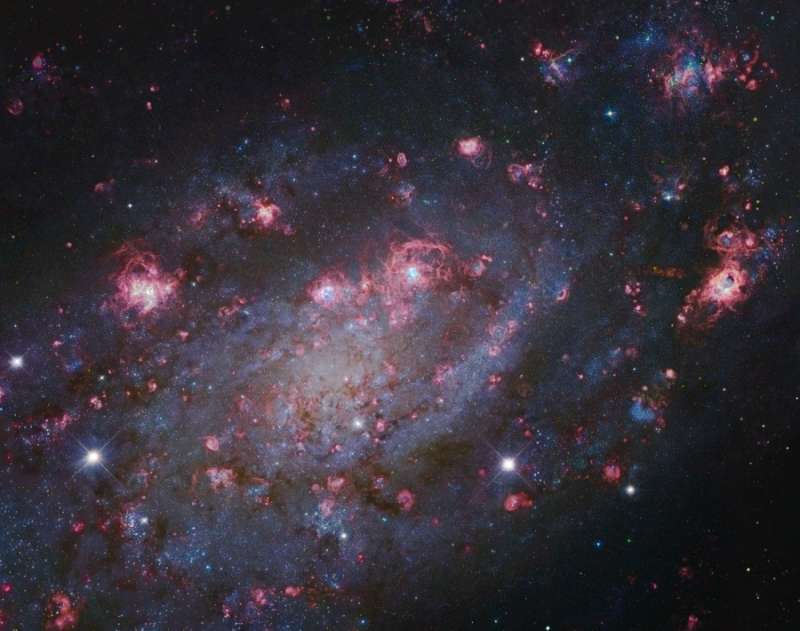
|
Credit & Copyright: Image Data -
Subaru Telescope
(NAOJ),
Hubble Legacy Archive;
Processing -
Robert Gendler
Explanation:
Magnificent island universe
NGC 2403 stands
within the boundaries
of the long-necked constellation
Camelopardalis.
Some 10 million light-years distant and about 50,000 light-years
across, the spiral galaxy also seems to have more
than its fair share of giant star forming
HII regions,
marked by the telltale reddish glow of atomic hydrogen gas.
In fact, NGC 2403 closely resembles another galaxy with an
abundance of star forming regions that lies
within our own local galaxy group,
M33
the Triangulum Galaxy.
Of course, supernova explosions
follow close on the heels of
the formation of
massive, short-lived stars and
in 2004 one of the brightest supernovae discovered in recent
times was found in NGC 2403.
Easy to confuse with a foreground star in our own Milky Way Galaxy,
the powerful supernova
is seen here as the spiky, bright "star" at
the left edge
of the field.
This stunning cosmic portrait
is a composite of space and ground-based
image data from the Hubble Legacy Archive
and the 8.2 meter Subaru Telescope at the summit of
Mauna Kea, Hawaii.
|
January February March April May June July August September October November December |
| ||||||||||||||||||||||||||||||||||||||||||||||||
NASA Web Site Statements, Warnings, and Disclaimers
NASA Official: Jay Norris. Specific rights apply.
A service of: LHEA at NASA / GSFC
& Michigan Tech. U.
Based on Astronomy Picture
Of the Day
Publications with keywords: spiral galaxy - HII region - star formation - supernova
Publications with words: spiral galaxy - HII region - star formation - supernova
See also:
- APOD: 2025 December 9 Á The Heart of the Soul Nebula
- Portrait of NGC 1055
- APOD: 2025 September 4 Á NGC 4565: Galaxy on Edge
- APOD: 2025 August 22 Á A Tale of Two Nebulae
- APOD: 2025 August 19 Á Giant Galaxies in Pavo
- APOD: 2025 August 18 Á NGC 1309: A Useful Spiral Galaxy
- APOD: 2025 July 31 Á Supernova 2025rbs in NGC 7331
